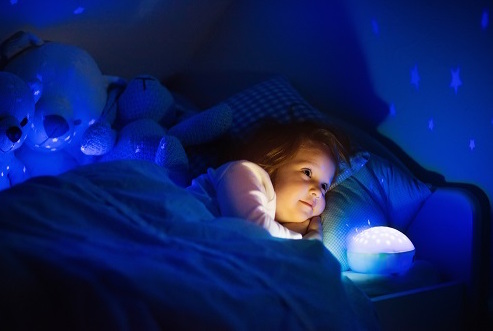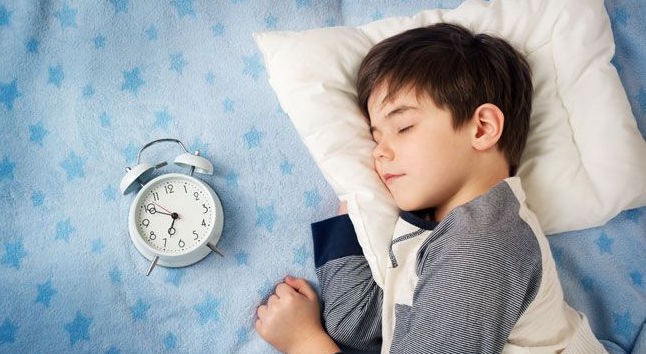As adults, we often think of child’s sleep as being the most carefree of their life but this, of course, this isn’t the case. From being hyperactive to insomnia, there are just as many reasons that a child may struggle to sleep compared to a grown adult.
To help this situation, there are several tactics that parents can use to not only help children get to sleep but then stay asleep for the full night. Once you build these habits, they will begin to be permanent while creating a happier environment for your household, and they will stick to these habits as they grow into an adult.
Why is sleep important for Children?
Children require significantly more sleep per night than adults and are less capable of making it through the day if they are consistently short of sleep.
If children are staying up later in the night but then being forced to wake earlier then sleep deprivation can harm both their academic performance and behaviour. Children who get the recommended levels of sleep experience a boost in health, learning, growth and brain development.
The more a child is tired, the harder it is for them to maintain concentration and retain information which has been backed by studies:
Researchers at SRI International discovered that children who stick to a consistent bedtime produced better results in reading, maths and languages compared to children who had irregular bedtimes.
The study featured 8000 child subjects who were all aged four and found that those who attained less than the recommended 11 hours per night fell behind in their school studies.
A study conducted in 2005 involving 74 children between the ages of 6 and 12 discovered that sleep restriction was directly connected to their overall academic performance and attention during school.
This was even found amongst children who had no prior academic or behavioural issues before the experiment commences.
According to a 2008 Canadian study published in the Sleep Journal , children who average below 10 hours of sleep each night before they turn aged 3 have a higher likelihood of developing reading and language problems including ADHD as they grow with age.
This is because sleep is a crucial time for brains in young children to develop and grow both structurally and functionally.
How much sleep do Children need?
To be able to improve the quality of a child’s sleep, you need to understand how much sleep they need to get each night. By understanding this, you can then set appropriate bedtime rules each night. The exact number of hours can vary from child to child, but there is a guideline based on age.
0 to 4 weeks old

Newborns spend the majority of their first few weeks sleeping racking up 16-17 hours of sleep per day spending just several hours of the day awake. Babies this young will be yet to develop a sleep cycle between night and day so the hours they spend awake or sleeping will not be consistent and will span all hours of the day. This means that parents have to readjust their day to fit around the needs of the newborn.
1 to 4 Months
Babies of this age continue to sleep for around 16-17 hours per day but their sleep cycles between day and night begin to take shape as they continue to grow. This means that they sleep longer throughout the night but less throughout the day.
1 to 3 years
As babies develop into toddlers, their sleep requirements decrease slightly to 12 – 14 hours of sleep per day but these ours become more flexible due to parents having more daycare and work commitments.
3 to 6 years
This age group requires around 11-12 hours of sleep per night with a child at the bottom of the age range still maybe requiring a nap throughout the day. As they get older, the need for an extra nap throughout the day reduces.
7-12 years
The sleep needs continue to fall to around 10-12 hours per night, however, due to school and other commitments, this is usually reduced to a realistic level of 9-10 hours.
13 to 18 years
As children grow into teenagers, the sleep demand from their body decreases to 8-10 hours. However, although this is the ideal amount, most teens only get 6-8 hours of sleep per night due to school commitments and after-school activities eating into this time.
Make a bedtime routine
The best way to improve your child’s sleep is by implementing a consistent structure for bedtimes. It will remove the stress for both the child and the adult as both will know exactly what will happen every single night. This also helps for your child’s body and mind to begin to wind down making it easier to fall asleep.
Any bedtime routine should begin around 50-60 minutes before they go to bed. This can include dimming the light or turning off electronic devices. The point of the activities is to relax your child, so common features of a bedtime routine include:
A warm bath
Brushing their teeth
Putting on their pyjamas
Storytime
The routine can be tailored specifically to your child depending on what works for them, but the most important thing is that you’re consistent and you follow the same pattern every single day.
Remove External Distractions
When you’re younger, your ears are much more sensitive to sound, and you can pick up much quieter sounds that may not affect adults. This could anything from the TV downstairs to the car pulling in to the driveway by the neighbours. This isn’t just limited to sounds but also light which can wake them up early in the morning causing them to struggle to fall back to sleep.
Of course, there’s only so much you can do, but you can start with blocking out external light and soundproofing walls. Also if they have older siblings, you need to make a conscious effort to make sure they stay quieter when the younger children have gone to sleep because older children will naturally stay up later.
Make the room darker
Most younger children like to sleep with a nightlight because this makes them feel safer. If they need to get up for any reason, such as using the bathroom, this means they can see where they’re going. However, just like fully grown adults, it’s easier for children to fall asleep when the room is as dark as possible.
The darker you can make the room the quicker your child will fall asleep meaning they will have a long deep, restful sleep.

Even if you keep a nightlight on there is still many other sources of light that you can remove such as electronics, toys and other gadgets that often has bright LED displays. These products may only emit a small amount of light, but the combined effect can cause disturbances.
Try Different Bedding
As parents, we will take the lead and buy all the bedding and accessories for the bed, but it’s essential that if your child has trouble sleeping you ensure that they are comfortable in the bed.
For instance, is the quilt is too thick and heavy leaving them hot then it can be hard to sleep or if their pillow doesn’t maintain a healthy head position which can lead to neck pain.
These may sound like minimal problems, but a combination of multiple issues can make it difficult to sleep. This is especially the case if the child is using second-hand items or hand me downs from older siblings who are often common with clothing and mattresses. Mattresses that have been used by several different people can develop unevenness or lumps which can make it uncomfortable to sleep on.
Discover their natural circadian rhythm
Every person has a natural internal body clock which is referred to as a circadian rhythm which is the natural time that you go to bed at night and wake up in the morning, and this is no different to children.
It’s important to know the circadian rhythm of your child because it may not match the proposed bet times that you have set and if there is too much different then they may find it hard to drop off to sleep.
So if it feels like they have bundles of energy, then their circadian rhythm could often be the cause. The quickest and easiest way to find out your child’s natural sleeping pattern Is to let them go to bed and wake up whenever they decide to for several consecutive days.
The best time to do this would be in the school holidays where you have fewer commitments such as them getting to school on time.
Just have a typical day where you do your usual activities and when they begin to get tired in the evening that’s their natural bedtime, and the time they wake up is their natural wake up time. There may be times where you can’t always stick to these times, but the closer you can get their daily bedtimes to it the better rest they will get.
Incorporate calming sounds
There’s only so much you can do to block out external sounds, and if you discover that your child is woken up by the slightest of sounds such as a family member walking across the hallway, then you may need to take it one step further.
White noise can be used to help your child get to sleep because it’s the primary purpose is to disguise external sound while also playing calming sounds which induce the feeling of sleepiness. If you don’t have a white noise machine, then you can find calming sounds via music apps which you can play into the room.
Create a Sleep/wake up plan together
If you currently find waking up your child is difficult, then you need to take a different approach and communicate with your child about how to work together to make it a smoother process.
This allows them to have input into their sleeping environment, such as the type of alarm clock or the type of pyjamas that they wear to bed. By involving them in the process, they are more likely to follow it and go to sleep and wake up at the right time.
Reserve bed for sleeping only
The only activity your child should do in the bed is sleep. This means that they will automatically associate getting into bed with sleeping and will cause a trigger in the brain each time which will make it easier to fall asleep.
If your child currently does other activities in their bed, then you may need to buy them a separate bean bag or furniture to be able to do this on instead.
Exercise/activities throughout the day
Children should exercise every day to benefit their general wellbeing and health, but it also helps with their sleep. When they have physical exercise, this uses energy which makes them more tired so come the night time it’s easier for them to fall asleep.
You can do this by taking them to the park after school or enrolling them in afterschool activities or sports. So not only do you get them healthy but also improve their sleep.
Temperature Control
Ensure that your child is comfortable with the temperature of their room. If this is the issue, then it’s one of the easiest fixes.
If the child is too Warm:
Use a fan or air conditioner
Use a lower tog quilt
Open a window
Wear less/thinner clothing
If the child is too Cold:
Check no draughts are coming in at the bottoms of windows
Turn up the radiator temperature
Bring a heater into the room
Add quilt or cover
Turn off electronics
An hour or so before your child's planned bedtime they need to turn off electrical items such as television and tablets because they stimulate wakefulness through both the blue light they emit and the content that they’re consuming.
If possible, you should aim to remove them from the room entirely while they sleep because if they can’t sleep, they may be tempted to turn them on which will only further diminish the amount of sleep they get that night.

